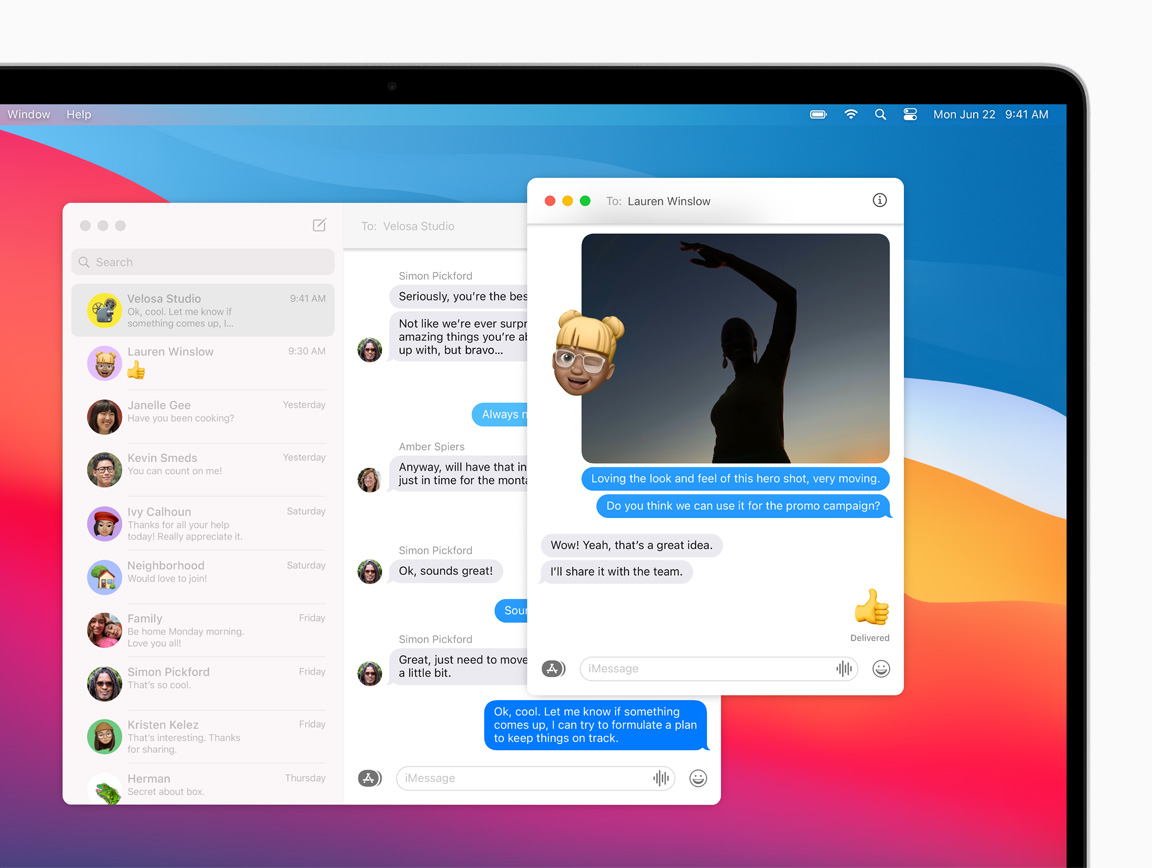Une Conversation Mac OS
Messages User Guide
- Collapsed conversations appear with a right-facing arrow, and expanded conversations appear with a down-facing arrow. Click the arrows to expand or collapse conversations. Read messages that are part of a conversation. When you click on a conversation header in the message list, the conversation index shows in the reading pane.
- To search through the Conversation History, click the folder in the navigation pane that you want to search in. Type a word or phrase in the Search box. Conversations that contain the search term appear in the upper-right pane. To delete a conversation from the Conversation History, select the conversation, and then click Delete.
Here are shortcuts you can use, in addition to those that appear in Messages menus.
Messages
The name 'Mac OS' was, allegedly, created when Apple started its program to encourage Macintosh clones; the intent may have been to provide branding for the OS, separate from the hardware. 'Mac OS X' was probably picked as a name to suggest continuity with the earlier OSes with 'Mac OS' in their names, even though Mac OS X was a new OS. Mac OS X is a Unix-like operating system developed by Apple for their Mac hardware line. Windows is a series of operating systems, running their own proprietary kernel, that is developed by Microsoft and licensed to various computer manufacturers.
Action | Shortcut |
|---|---|
Open Messages preferences | Command-Comma (,) |
Hide Messages | Command-H |
Hide everything except Messages | Option-Command-H |
Quit Messages | Command-Q |
Command-N What does it mean when a rabbit crosses your path. | |
Open the Messages window | Command-0 |
Close the Messages window https://softwareniche.mystrikingly.com/blog/sword-pricess-amaltea-the-visual-novel-mac-os. | Command-W |
Print the conversation | Command-P |
Search all conversations for matching text | Command-F |
Clear the transcript (delete a conversation without closing it) | Option-Command-K |
Open the Emoji & Symbols window | Control-Command-Space |
Minimize a window | Command-M |
Minimize all windows | Option-Command-M |
Enter full-screen view | Control-Command-F |
Conversations
Action | Shortcut Ballyhoo (1985) mac os. |
|---|---|
Make the text bigger | Command-Plus Sign (+) |
Make the text smaller | Command-Minus Sign (–) |
Insert a line break (in a message) | Option-Return |
Copy the selected text | Command-C Mokmok mac os. |
Paste copied text | Command-V |
Open the Spelling and Grammar window | Shift-Command-Colon (:) |
Check the text field for spelling and grammar issues | Command-Semicolon (;) |
Reply to the last message in a conversation | Command-R |
Add a Tapback to the last message in a conversation | Command-T, then press 1 through 6 for the Tapback you want |
Select the next conversation | Control-Tab |
Select the previous conversation | Control-Shift-Tab |
Open the conversation Details view | Command-I |
Open the Contact card for the conversation recipient | Option-Command-B |
Send an email to a selected person in the conversation | Option-Command-E |
Show video effects (while in a video call in Messages) | Shift-Command-E |
Show the selected image in the Quick Look window | Space |
Delete (first, select the message) |
By default, the Mail application on the Mac takes e-mail messages with the same subject line—including those that were sent hours, days, or even weeks ago—and groups them into “conversations.”
It’s a handy if you like viewing the back-and-forth of an e-mail discussion, but annoying if you prefer your messages arranged in the order they arrived in your inbox.
Just uncheck the “Organize by Conversation” setting to see your messages in the order you received them.
Well, here’s the thing: there’s no need to stick with the “conversation” view if you don’t want to.In fact, it’s pretty easy to “unthread” the mail conversations in your Mac’s Mail inbox messages—or it is once you know the right setting to tweak.
To turn off threaded conversations completely:
- Click the View menu.
- Uncheck the setting that reads “Organize by conversation.”
There’s also a middle ground for those who’ve warmed to threaded Mail conversations but still want to see every single message listed separately in their inboxes.
- Click the View menu, then make sure the “Organize by conversation” setting is checked.
- Select the “Expand All Conversations” option.
Bonus tip

You can quickly expand any mail conversation by selecting it in your inbox and pressing the right arrow key.
Looking for more Mac tips? Click here!